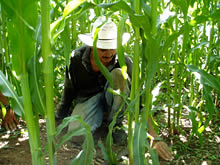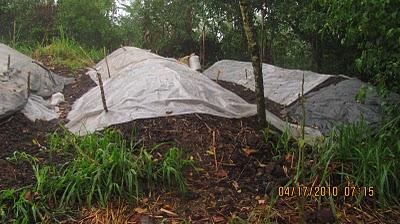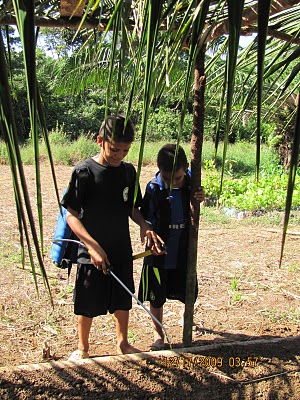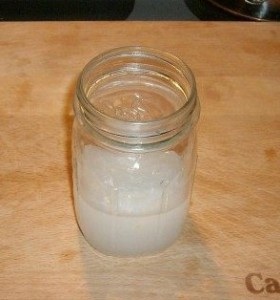[start quote]
[cab] (…) Bokashi, as it has come to mean (…), is not a composting process. At all. It doesn’t make compost, but it does convert material that can’t be composted because it’ll go rancid or attract beasties into something that you can bury and ignore, and it also produces a nutritious liquid plant food.
But the magical ‘effective microorganisms’ of which the sales pitch would have you believe are, in my view, rather spurious.
The best results I’ve obtained have been by taking a fresh load (a little kitchen composter pot sized amount) of mixed kitchen waste, mixing in a tablespoon of glucose from a health food shop, and some Lactobacillus bacteria powder, of the type that you get from a health food shop (and which a home salami maker may have lurking in the fridge!). Mix up, put in a tightly sealed filled plastic container (a bokashi composter) with a tap on the bottom, and leave it for three weeks.
When it works (which has been all but twice) you’ve basically got a bacterial de-proteination of the waste. Or, in other words, the Lactobacillus bacteria have gone nuts, eaten the glucose, and then gone looking for more goodies. The pH has dropped to a point where much of the protein has lysed out of the food waste and is sitting in the liquid (tap that off as plant food, needs diluting a lot of course), and the solid matter smells just a little unpleasantly sweet. Bury the waste in a corner of the allotment somewhere and ignore it. It’ll rot down, and worms will eat it.
When it doesn’t work, it goes rank and horrid and you’ll need a strong stomach to deal with it.
Using the bokashi ‘bran’ has been no more or less successful than a spoonfull of bacteria powder and some glucose.
I conclude, therefore, that the process (at least with the waste we’ve been producing!) is very much akin to ensilaging.
[end quote]
Date: Jan 27, 10





